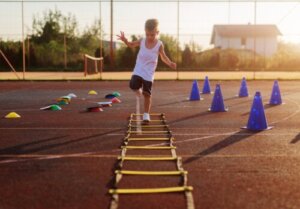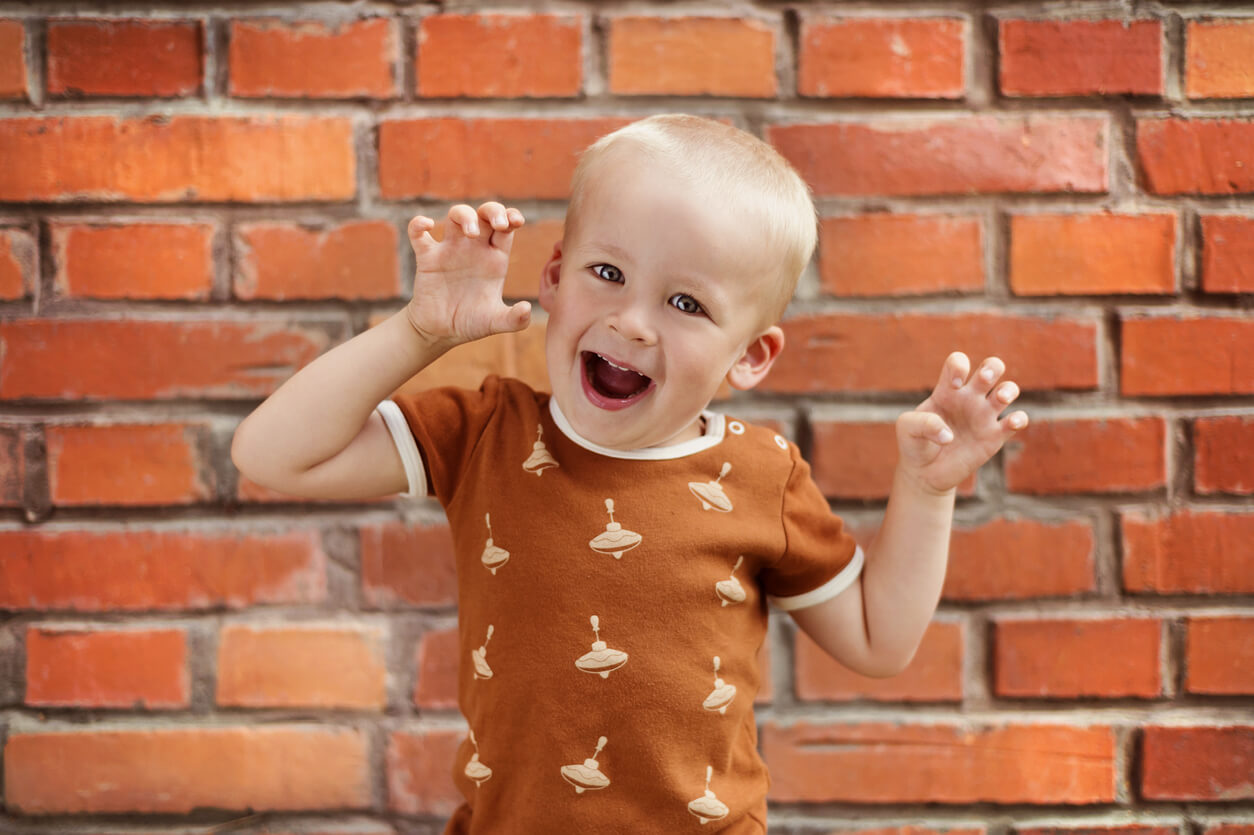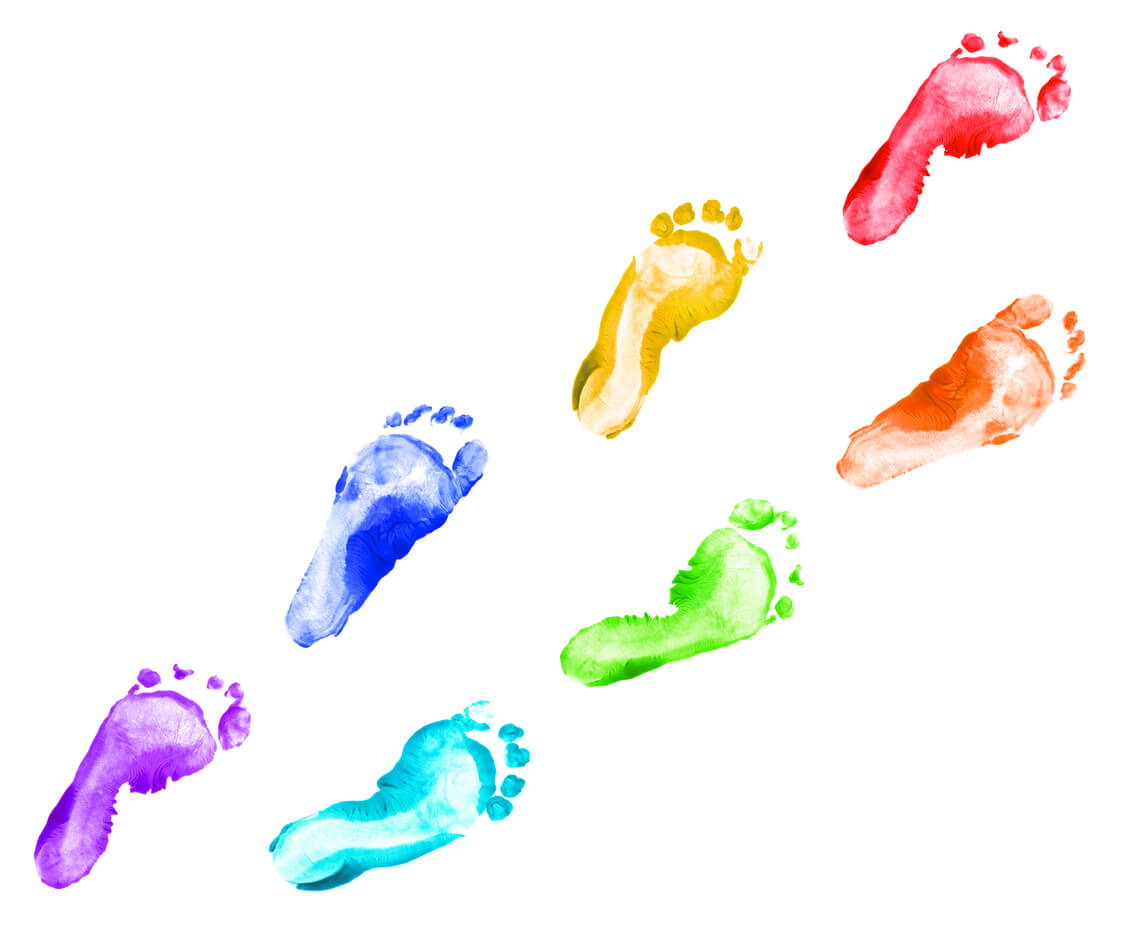5 Gross Motor Exercises for Children


Written and verified by degree in physical education and sports Andrés Felipe Cardona Lenis
Child development is one of the most relevant aspects of a human being’s life. It’s precisely at this stage that the foundations for the future are laid, in psychological, physical, emotional, and social aspects. In this case, we’ll tell you about 5 gross motor exercises for children.
For those who don’t know what it is, psychomotor skills refer to the ability to control body movements. Therefore, people interact with the environment and we thereby encourage the development of other skills, such as psychosocial skills.
Based on the above, we’ll teach you what gross psychomotor skills are and what exercises you can do to enhance them in your children.
What are gross psychomotor skills?
Psychomotor skills refer to the control over the body and its respective movements. In other words, it’s the combination of cognitive and physical (motor) aspects to achieve a delicate balance.
Within this skill, two main areas stand out: Gross and fine psychomotor skills.
The first consists of body movements performed by the large supporting structures. That is, walking, running, jumping, or jogging. All these movements require the coordinated work of several muscle and bone groups.
Moreover, these types of movements are the first to be learned. Despite this, it’s important to work on them in order to improve the psychophysical abilities of children.
Gross motor exercises
In order for children to enhance these skills, it’s important to implement a series of exercises. Remember that most of the physical work of little ones should be focused on play because entertainment motivates them to carry it out.

1. The mirror game
The mirror game focuses on imitating body movements. It’s best done with several children grouped in pairs, but if you’re going to do it alone with your child, you can be their partner.
To do it, you must face each other, just like in a mirror. From there, perform movements for your child to imitate.
We recommend you to start with slow and simple movements, with a large range of motion. This way, your child will be able to pick up the rhythm little by little.
Don’t forget to exchange roles so that your child can also propose their own sequences.
2. Balancing on a line
Balance is a fundamental part of gross motor skills, so it must be constantly stimulated.
In order to work on this physical ability, you should implement exercises that involve dynamic and static balance. By means of the balancing on a line, it’s possible to stimulate both types.
We recommend you draw a line on the floor, which is wide enough to place the foot. On this line, give the indications to perform various movements: Walking, jumping, and balancing on one leg are the most common. Remember that all of them must be executed without placing their feet or hands outside the line.
3. Bowling
Bowling can be practiced by children of any age, as it stands out as an entertaining and cheerful alternative. But in addition to entertainment, this game favors the development of gross psychomotor skills due to the body movements required for its realization.
If you don’t have a bowling game, you can make your own with plastic bottles. All you have to do is set the stage for your child to throw the ball. Place some homemade bowling pins at a short distance and let the game begin!
As the throws go by, add more pins and increase the distance to make it a little more difficult.
4. Role playing with animals
As mentioned above, exercises done through games are more appealing to children.
In this case, the main objective is for your child to assume the role of an animal and carry out the movements of that species. For example, if it’s a kangaroo, they should emulate the way it jumps it makes to move.
In order to make the game more entertaining and complex, you can implement the roles according to the natural habitat theme. Ask your child to act out animals from the jungle, from the ocean, and so on.
5. Painting with feet
Painting with hands favors the development of fine motor skills, but how about painting with your feet?
Soaking the soles of your child’s feet with colored tempera is a lot of fun for them. In addition to that, if you put canvases around the house and encourage them to walk and form different figures, they’ll have a great time.
When doing this activity, your child will have to move in different ways and even keep balance to avoid falling. If you think about it, it’s a great alternative to strengthen gross motor skills.

Gross motor exercises, the sooner the better
Physical abilities should be worked on from an early age in order to achieve better development of them. During childhood, the brain and the whole body are more sensitive to learning and psychomotor skills are no exception.
Practically all body movements are built from infancy and you can help your child stimulate them through the above exercises.
Child development is one of the most relevant aspects of a human being’s life. It’s precisely at this stage that the foundations for the future are laid, in psychological, physical, emotional, and social aspects. In this case, we’ll tell you about 5 gross motor exercises for children.
For those who don’t know what it is, psychomotor skills refer to the ability to control body movements. Therefore, people interact with the environment and we thereby encourage the development of other skills, such as psychosocial skills.
Based on the above, we’ll teach you what gross psychomotor skills are and what exercises you can do to enhance them in your children.
What are gross psychomotor skills?
Psychomotor skills refer to the control over the body and its respective movements. In other words, it’s the combination of cognitive and physical (motor) aspects to achieve a delicate balance.
Within this skill, two main areas stand out: Gross and fine psychomotor skills.
The first consists of body movements performed by the large supporting structures. That is, walking, running, jumping, or jogging. All these movements require the coordinated work of several muscle and bone groups.
Moreover, these types of movements are the first to be learned. Despite this, it’s important to work on them in order to improve the psychophysical abilities of children.
Gross motor exercises
In order for children to enhance these skills, it’s important to implement a series of exercises. Remember that most of the physical work of little ones should be focused on play because entertainment motivates them to carry it out.

1. The mirror game
The mirror game focuses on imitating body movements. It’s best done with several children grouped in pairs, but if you’re going to do it alone with your child, you can be their partner.
To do it, you must face each other, just like in a mirror. From there, perform movements for your child to imitate.
We recommend you to start with slow and simple movements, with a large range of motion. This way, your child will be able to pick up the rhythm little by little.
Don’t forget to exchange roles so that your child can also propose their own sequences.
2. Balancing on a line
Balance is a fundamental part of gross motor skills, so it must be constantly stimulated.
In order to work on this physical ability, you should implement exercises that involve dynamic and static balance. By means of the balancing on a line, it’s possible to stimulate both types.
We recommend you draw a line on the floor, which is wide enough to place the foot. On this line, give the indications to perform various movements: Walking, jumping, and balancing on one leg are the most common. Remember that all of them must be executed without placing their feet or hands outside the line.
3. Bowling
Bowling can be practiced by children of any age, as it stands out as an entertaining and cheerful alternative. But in addition to entertainment, this game favors the development of gross psychomotor skills due to the body movements required for its realization.
If you don’t have a bowling game, you can make your own with plastic bottles. All you have to do is set the stage for your child to throw the ball. Place some homemade bowling pins at a short distance and let the game begin!
As the throws go by, add more pins and increase the distance to make it a little more difficult.
4. Role playing with animals
As mentioned above, exercises done through games are more appealing to children.
In this case, the main objective is for your child to assume the role of an animal and carry out the movements of that species. For example, if it’s a kangaroo, they should emulate the way it jumps it makes to move.
In order to make the game more entertaining and complex, you can implement the roles according to the natural habitat theme. Ask your child to act out animals from the jungle, from the ocean, and so on.
5. Painting with feet
Painting with hands favors the development of fine motor skills, but how about painting with your feet?
Soaking the soles of your child’s feet with colored tempera is a lot of fun for them. In addition to that, if you put canvases around the house and encourage them to walk and form different figures, they’ll have a great time.
When doing this activity, your child will have to move in different ways and even keep balance to avoid falling. If you think about it, it’s a great alternative to strengthen gross motor skills.

Gross motor exercises, the sooner the better
Physical abilities should be worked on from an early age in order to achieve better development of them. During childhood, the brain and the whole body are more sensitive to learning and psychomotor skills are no exception.
Practically all body movements are built from infancy and you can help your child stimulate them through the above exercises.
All cited sources were thoroughly reviewed by our team to ensure their quality, reliability, currency, and validity. The bibliography of this article was considered reliable and of academic or scientific accuracy.
- Pedro Gil Madrona, Et al. (2008). Revista Iberoamericana de Educación. Habilidades motrices en la infancia y su desarrollo desde una educación física animada. https://www.redalyc.org/pdf/800/80004706.pdf
- Virginia Manjón Nieto. (2017). Universidad de Salamanca, Facultad de Educación. Indicadores del desarrollo de la dimensión psicomotriz (0-3 años). https://gredos.usal.es/bitstream/handle/10366/133339/2017_TFG_Manj%F3nNieto,VIrginia_Indicadores%20del%20desarrollo%20de%20la%20dimensi%F3n%20psicomotiz%20(0-3%20a%F1os).pdf;jsessionid=72704A6BB69B86FDA5BCC34D3240FB45?sequence=1
This text is provided for informational purposes only and does not replace consultation with a professional. If in doubt, consult your specialist.








